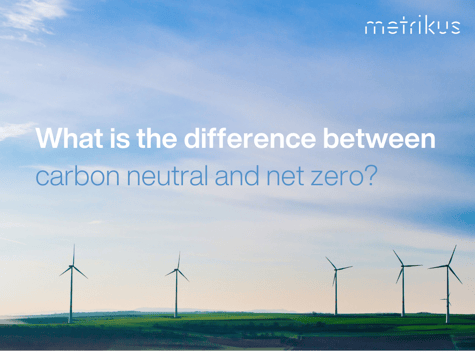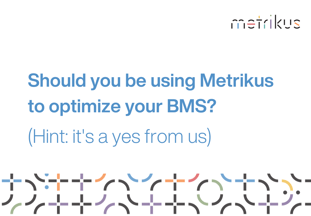Carbon neutral vs net zero | Key differences
In an attempt to tackle the climate crisis, more and more businesses are pledging to become carbon neutral or net zero, but there’s often a lack of clarity over what this actually means.
Terms like these tend to be used interchangeably, and there are concerns that companies are using impressive sounding statements for marketing purposes, without really understanding what they need to do to achieve them.
In this blog post, we take a look at what carbon neutral and net zero mean in practice, and importantly, what the difference is between them.
What does carbon neutral mean?
To be carbon neutral, a company needs to measure its carbon footprint (CO2e) and then carry out carbon offsetting activities to effectively remove the same amount of CO2e from the atmosphere.
James Cannings, Chief Sustainability Officer at MSQ, spoke to us about the limitations of this definition:
‘Whilst paying money to stop part of a forest being cut down – a common approach to offsetting – is a very worthy cause to support, it doesn’t actually remove the emissions (to bring things back into balance) since that forest was already there.’
It’s relatively easy for companies to become carbon neutral, and while doing so is undoubtedly a big step in the right direction, the fact of the matter is: carbon neutrality isn’t going to solve the climate crisis.
What does net zero mean?
To be net zero, a company needs to reduce its emissions by 90% to 95% – depending on their sector – from their base year. And this is a reduction in absolute emissions, so businesses have to reduce by that amount regardless of any growth during that time.
The final 5% to 10% of emissions then have to be removed using more expensive types of offsetting which permanently remove the carbon from the atmosphere, like direct air capture.
Cannings told us why this definition of net zero, introduced in October 2021, is so valuable:
‘This specific definition of net zero has only come very recently from the Science Based Targets initiative (SBTi), and it will undoubtedly be refined over time, particularly I think around absolute and intensity based targets. But it’s great to have a definition like this to show that there’s a big difference between being carbon neutral and being net zero – you can’t rely on offsetting, you actually have to reduce your emissions by 90%.’
For most companies, achieving net zero in the next decade is unattainable, but it’s what we all need to hit by 2050.
So what’s the difference?
It’s clear that there’s actually a massive difference between being carbon neutral and net zero.
Your company can say it’s carbon neutral if you’ve measured your footprint and you are doing some offsetting to try and mitigate that. But you can only say you’re net zero if you’ve actually reduced your emissions by 90% to 95%.

Getting started
Aiming for net zero can seem overwhelming, so we’ve broken it down into a few key steps to get you started.
1. Understand your current emissionsThe most important thing is to start measuring your emissions as soon as possible. There are lots of free carbon footprint calculators out there to help you out.
We’d also recommend real-time energy monitoring in your workplace, as buildings are likely to be one of your biggest sources of emissions.
2. Set targets for reduction that are based on science
Once you’ve started measuring your emissions, you need to set some targets for reducing them. A target is defined as ‘science based’ if it’s in line with the scale of reductions required to keep global warming below 1.5°C from pre-industrial levels.
If you’d like some guidance, the Science Based Targets initiative (SBTi) is there to help you out.
3. Deliver carbon reductions and efficienciesIdentify quick wins: switch your offices to renewable energy suppliers and reduce business travel where possible. It’s also a good idea to engage the whole team in making reductions, especially if you have employees working from home.
4. Compensate for your current emissionsEven while you’re still figuring out your plans for reduction, you can get cracking offsetting your current emissions.
As we’ve mentioned already, it’s better to opt for more expensive types of offsetting which permanently remove the carbon from the atmosphere, like direct air capture.
5. Build a long-term strategyFor most companies, reaching net zero by 2050 is going to be a big task, but the sooner you get started, the better. Get thinking about your long-term plan now – you won’t regret it!
Want to get started on the journey to net zero? Speak to an expert about making your building more energy efficient today.




